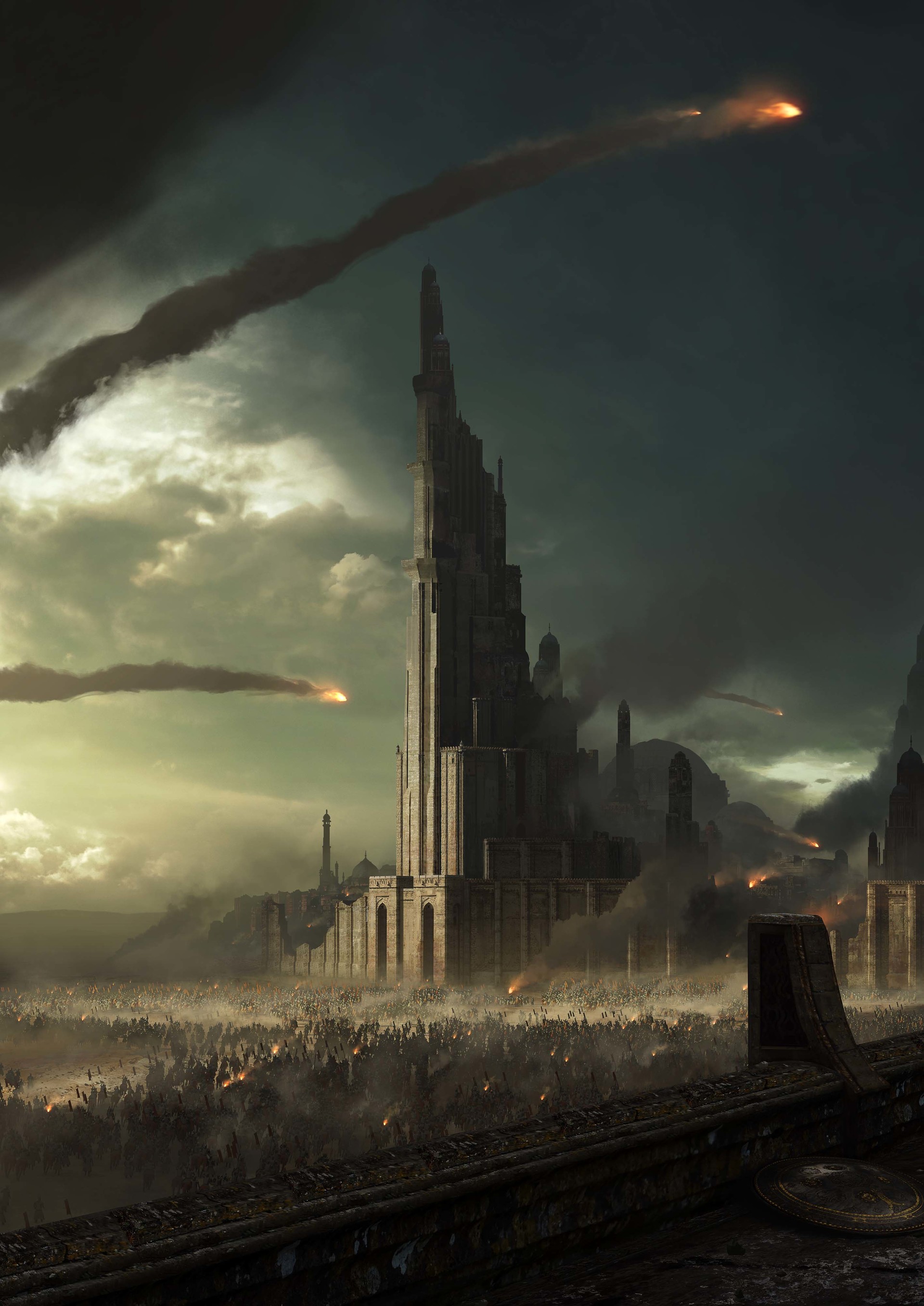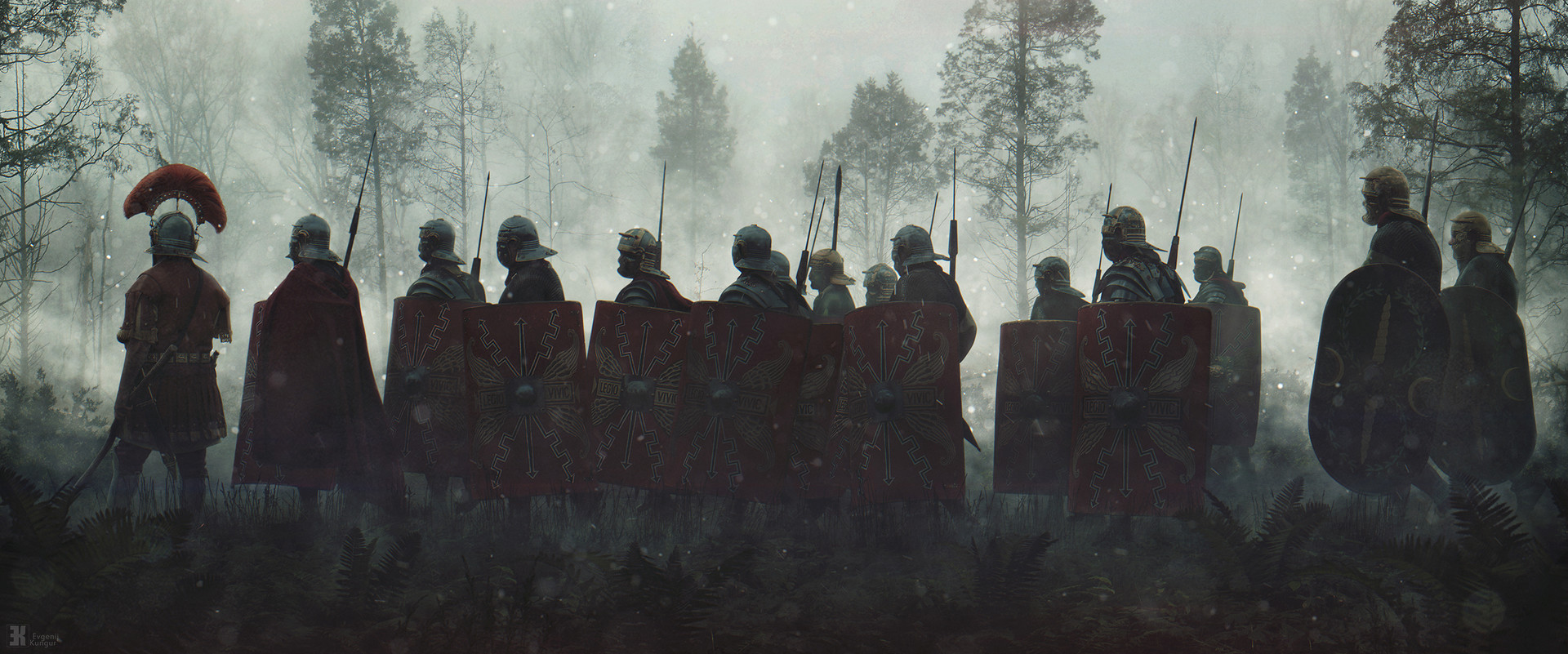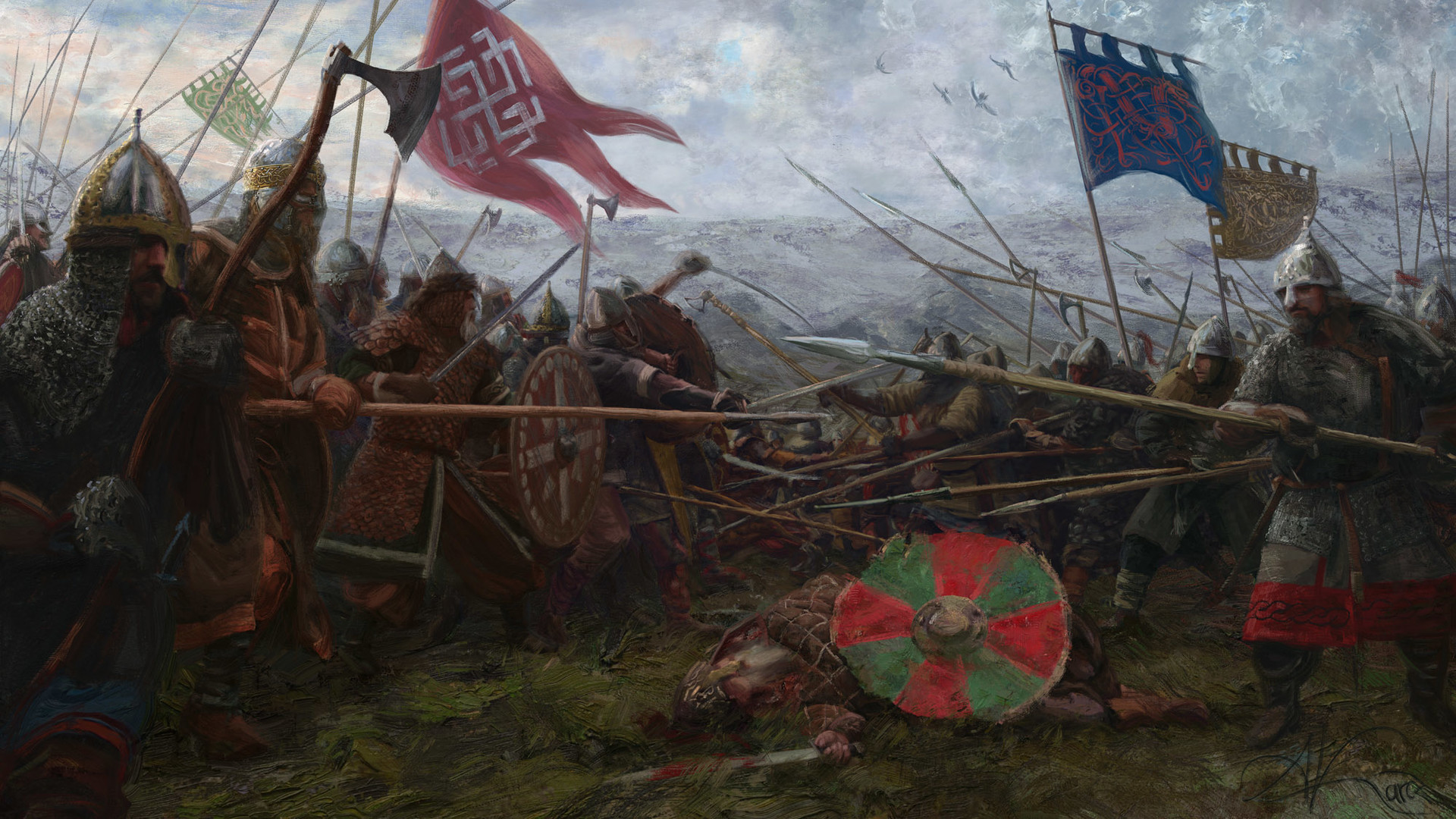Battle of the Tevia
I have gained victory today; that much is true. But I've achieved so much more, Tiberian. Today, I have won the empire.
Despite its status as the most famous battle of the 32nd century, the conflagration that erupted along the banks of the river Tevia in the early autumn of 3131 DA, was anything but the decisive victory it has often made out to be.
Background
Vardania in the 32nd century was a place of great change and upheaval. The Fourth Hegemony, once the dominant power on the continent, was nearing total collapse after over a century of decline. Various regional powers and warlords asserted themselves and carved out domains in the shadow of imperial decay. Worse yet was the arrival of a new wave of migratory tribes from the Far North. These Eskani managed to breach the defenses of the Northern March and overran much of the continent. By 3131 DA, their unified advance began to falter. Individual armies still marched on, however. One such group were the Peleset under their King Ensi. After ravaging much of the Western Provinces over the summer, Ensi turned eastward and invaded the Heartlands. This provoked a response by Gordian Artanus, the warlord ruling over the area. Originally contend with harassing the enemy, he mobilized his army when it became clear that Ensi was marching toward Aurasio by early autumn.The Battle
Gordian quickly recognized that he could not match the Eskani host. Rather than directly face them, he planned to let them pass toward Aurasio. When the Eskani would inevitably busy themselves by raiding the city's suburbs, Gordian would strike from behind and crush their disorganized host against the ancient settlement's walls. Ensi proved uncooperative, however, and veered off north in early Octem, following the course of the river Tevia.The Battlefield
Ensi chose to cross the Tevia near the village of Termina, about thirty-five kilometres west of Aurasio. The land here is one of rough, hilly terrain with isolated pockets of dense pine forests, through which the Tevia cuts like a knife from east to west. Prone to cyclical flooding, the Tevia has carved itself a broad channel that extends up to five hundred meters to either side. During dry seasons, such as Frigian in Vardania, it makes for a long, thin expanse of flat land that is divided by the deep ravine of the Tevia's core bed. There is only one river crossing in this area, a small stone bridge that is usually submerged during Hydian. It would be the center of the battle.The Armies
Sources on the exact composition of the armies of that are hard to come by, but it is generally accepted that Gordian had assembled around 15.000 soldiers for the battle. Most of them seem to have been heavy infantry drawn from legionary regiments although there is mention of a sizeable contingent of Heronian heavy cavalry. His opponent had numerical superiority, even if accounts of up to 100.000 barbarians are likely myth, and his army probably consisted of light infantry and skirmishers, a composition favoured by the raid prone Peleset.Eskani Dominion
Ensi, King of the Peleset
~ 30.000 Soldiers
~ 7.000 Soldiers
Escape North.
Contingent destroyed.
Ensi, King of the Peleset
~ 30.000 Soldiers
~ 7.000 Soldiers
Escape North.
Contingent destroyed.
Factions
Leaders
Total Strength
Soldiers Committed
Goal
Casualties
Leaders
Total Strength
Soldiers Committed
Goal
Casualties
Fourth Hegemony
Warlord Gordian Artanus
~ 15.000 Soldiers
~ 10.000 Soldiers comitted
Halt the Eskani Advance.
Unknown but light.
Warlord Gordian Artanus
~ 15.000 Soldiers
~ 10.000 Soldiers comitted
Halt the Eskani Advance.
Unknown but light.
Ten thousand dead barbarians. And yet it is just a drop of rain compared to the ocean.
Day 1-3: Carnage by the Crossing
Gordian had lost sight of the Eskani army on the 9th of Octem and it was not until noon of the 12th that his scouts caught Ensi's forces again. The Peleset had already begun to cross the Tevia, and when Gordian's army reached the battlefield, only the Eskani rearguard remained on the southern bank. Rather than wait for his whole army to gather, Gordian decided to strike. Within the hour, an all-out imperial attack slammed into the Eskani force still waiting before the crossing. Heavy archer fire pinned down any relieve force from crossing back. At some point during the fighting, sources don't really allow for an accurate say when, the Heronian Cavalry charged and managed to push the Eskani from the crossing. Ensi's rearguard moved west along the river, constantly harassed by imperial forces. With a strong contingent blocking the crossing there was nothing the Eskani could do but watch as their allies were slaughtered or captured across the next two days. By the morning of the 15th, the Eskani rearguard had been fully destroyed and Gordian could gather his forces at the crossing again.Day 4-9: Confused Stalemate
There they were met by an increasing number of Eskani soldiers. Why Ensi had not taken action sooner is unknown. Perhaps his army had already spread out north of the Tevia and it had taken that long to gather them again. Or perhaps there were problems in bringing the news to him. Whatever the case, Ensi reacted to late. While his army still outnumbered the Imperials at least two-to-one, there was no way to bring that advantage to bear. Gordian held the crossing and any attempt to seize it would have ended in a costly victory at best. The nearest alternative was at least four days away and every day more of Gordian's forces were arriving. Ensi seems to have been taken with indecision and for several days, the two armies held the stand-off at the river crossing, occasionally skirmishing with one another. Finally, on the 21st of Octem, Ensi decided to retreat.Aftermath

by Eddie Bennun
In that one aspect, the rise of the Artanids, this minor, insignificant really, battle becomes perhaps the most important event of the last two-hundred years.
Included under Conflict
Conflict Type
Military Campaign
Battlefield Type
Land
Start Date
12.10.3131 DA
Ending Date
21.10.3131 DA
Conflict Result
Imperial victory. Peleset driven from the Heartlands. Gordian Artanus proclaims himself emperor of the Hegemony.
Location
While the Battle of the Tevia is mentioned in several sources of the time, its exact nature remains less than clear. King Ensi's intentions, the scale of his invasion of the Heartlands, the size of his army, they all vary depending on source. The account of Prescenian, a monk living near Aurasio at the time, even claims that Ensi and his people had served Gordian as mercenaries prior to their clash. Something that if true, would transform the conflict from a barbarian invasion into a mutiny or rebellion.
Coalition of the Ragged
Modern artists like to portray Gordian's army at the Tevia as a host of great warriors clad in gleaming steel. An echo of the mighty imperial armies of ages past. Reality was likely far more disappointing. After two centuries of civil war, the once powerful legions had degenerated into a ragtag host of barbarian warbands, mercenaries and whatever remained of the professional army regiments.
Strong and experienced warriors all, but far less glamorous than what is remembered today. By some accounts, Gordian had to call upon the support of nearly thirty minor and major warlords to assemble his host of barely 15.000 men. A number that if correct would indicate just how damaged the Hegemony had become by 3131 DA.
It was a small victory. But after what had come before, it was the boost the Hegemony needed.Endless Journey
Ensi and the Peleset had been defeated, but not destroyed. Retreating north, the Peleset would disappear for a few years in the chaos that had engulfed the region following the break-up of the Eskani host. They re-appear in the 3140s in the northern Reach. Still led by Ensi, although some sources claim that it was a different man with the same name, they would once again attempt to invade imperial territory. Beaten again, this time by imperial warlord Jordanus of Aurelia, they would finally settle close to the border. The "Raider Kings" of the Peleset would prove an enduring foe of the Hegemony for many years to come.

by waqas malik







I like the fact that, although this wasn't a super important battle in the war, it had really important implications politically. That's a nice subversion.
Explore Etrea | March of 31 Tales